What is a resume?
Your résumé is your representative in your absence. It is a snapshot of your intentions, qualifications, character, skills and abilities, and work history in words. While concise, it should also be as complete as necessary, an “open book” presenting the honest best of who you are–at a glance.
Think of your résumé as a person. Don’t you want the person representing you and your interests to be dressed in clean, professional clothing? Shouldn’t that person exude confidence, look people in the eye with a warm, firm handshake, and speak about you clearly, accurately, and positively?
In a world of intense competition for jobs, you want your résumé to represent you accurately, and at your best. What you don’t want is a résumé that reads like a list of job descriptions that anyone could have done.
How Hiring Has Changed
Imagine yourself in the shoes of the manager at the company where you want to work, who has the job of hiring someone into the position you want.
In the 20th and early 21st century, a hiring manager would wind up with a stack of dozens of résumés and cover letters to read through. Each was printed on varying shades of quality linen paper, with different fonts and designs, received in the mail in matching envelopes. The hiring manager would manually sort into two piles: Keep or Discard. In about 8 seconds, the human eye would scan the résumé, taking in the name, summary at the top, headlines, a few details. Toss, Toss, Toss, then Keep. Those in the “Keep” pile would get a closer look, and an actual read-through of the cover letter. Then a handful of those would get called in for an initial interview.
Back in the day, there would have been a secretary or administrative assistant tasked with writing and mailing a polite rejection letter to those in the discard pile.
But that all changed in 2007-2008 when the economy tanked. Scores of U.S. companies started to fail, and jobs were shed by the millions. One of the biggest areas cut: human resources. By 2010, millions were unemployed and in the job market, competing for openings. A job opening that used to have dozens or hundreds of applicants suddenly had thousands of applicants per position. With fewer people in HR to sort through them, a huge need arose which became filled, like so many other needs, by non-human digital machinery called applicant tracking systems, or ATS software.
The rise of the ATS
The ATS is a type of database that holds information about applicants and open positions. Hiring managers enter a job description into the ATS, specifying the most important job skills, experiences, or knowledge required for that position. Search parameters might look like this: out of every batch of 100 applicants, show me just the top 20. Now, instead of thousands or hundreds of applicants, the ATS pre-screens the applicant pool to show just the “cream of the crop.”
The hiring manager is presented with applicant’s work data in a form. The ATS system may or may not forward a digital copy of your beautifully-designed résumé PDF to the hiring manager; or, they might not see it until just before an interview. It depends on the software, and how the company chooses to use it.
Today more than ever you need a well-designed résumé that meets two criteria:
- Represents you accurately to a potential human employer
- Is formatted to passes the machine eye, the ATS filter.
The use of ATS software grew exponentially through the recovery. By 2015 a full 75% of hiring and talent managers were using ATS software (Capterra).
How do you know if you’re applying through an ATS?
If you are asked to upload your résumé using an form online, you are uploading into an ATS system.
The ATS parses data from within your résumé and feeds it into fields in the database. From there, batches of applications are sorted using Google-like algorithms that look not just for keyword matches, but also for contextual information, confirming that you actually have the skills. It then ranks all of the applications in the batch from the best, most highly-qualified potential applicants, on down. It’s up to the hiring manager to say how many to see. Essentially, 80% or more of applications are summarily discarded by the ATS system, never seen by human eyes. This is what is called “the job hunter’s black hole.”
A few years ago, a C-level executive came to one of my workshops who had been downsized from a large corporation a few years prior. Knowing nothing about ATS systems, he wound up sending out more than 1,500 applications before getting an interview. He had figured it out on his own.
All that said, it’s still a who-you-know world
Despite this new “filter” between yourself and a potential employer, some things have NOT changed. This one I predict, never will change: It is still a who-you-know world. Only about 20% of new hires are by “cold applicants,” strangers, with only about 15% from job boards. The rest — 80% — are some kind of warm referral. About 40% come from employees referring people they know. (Jobvite)
The good news: thanks to LinkedIn, you have the power to cross over the line from being a warm, referred applicant. Getting set up on LinkedIn is one thing. Getting GOOD at LinkedIn is another. And this is something I teach all of my clients. LinkedIn is essential today, in most fields. Not all. There are exceptions, it depends on the field. But the opportunities to connect with the people who can help you craft the career of your dreams is enormous.
Do I really need a professional to help me with my résumé?
I am all about teaching and empowering my clients to be able to write their own résumés, going forward. In fact this is one of my key benefits, compared to other résumé writers. As a certified ghostwriter, I understand that it is YOUR résumé, not mine. You get to see the process I use to write your résumé and to be honest, most of my clients are able to take it from there, going forward.
To know if your current résumé is good enough, here’s a quick test. See if your résumé conveys some of your key personality traits, in addition to you work skills and experience. Regardless of the position, here are some key traits in high demand that all employers value. Check off those on this list that apply to you.
__ Punctual
__ Dependable
__ Knowledgable
__ Reliable
__ Enthusiastic
__ Organized
__ Professional
__ Capable
__ Qualified
__ Motivated
__ Committed
__ Honest
__ Truthful
__ Responsible
__ Fast Learner
__ Positive
__ Tactful
Now, take a glance at your own résumé. Do the qualities your checked as true for you come across on your résumé — in less than 8 seconds?
Do these qualities come across in your LinkedIn profile, just as rapidly?
If your career documents do not quickly communicate these important character traits, or, worse, if the communicate any of the opposite traits, your chances of getting called in for an interview are slim.
Ready to learn more about how to create your interview-winning résumé? Contact me today to send you my free Résumé Organizer Checklist and book an appointment with me.
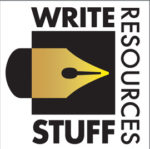
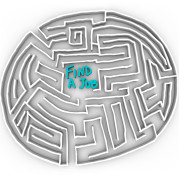
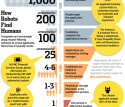
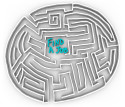





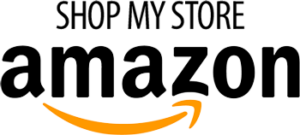
Recent Comments